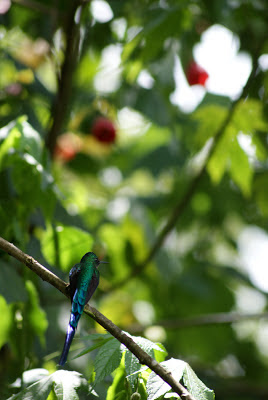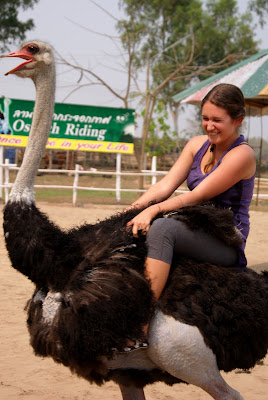
You can’t go to Africa, particularly East Africa, and not go
on a safari. Okay, you can, but really, why would you want to? The
practical, grown-up answer is, of course, money; as a general rule,
experience-based commodities, especially when the experience is something rare
or precious, tend to be either expensive affairs or jam-packed with people.
Luckily for us, Uganda currently falls right in between
those two extremes: not the most popular, over-touristed destination in the
region (like Kilimanjaro or Serengeti National Park) , but with a
newly-blossoming budget safari industry. And by ‘newly-blossoming’, I mean ‘has
two reasonable options.
Now, the difference between a budget safari and your other
safari options comes down to one thing: number of passengers, i.e. are you
willing to risk sharing your experience with a bunch of strangers, potentially
putting the fate of your trip in their hands? Some people would rather pay more
and keep the whole thing as a private endeavor, since, as we have learned in
the past, the group is one of the vital ingredients, with the power to
completely sabotage an experience. We got lucky. Not only did we save money, but we ended up
with a fantastic group of people, something that certainly augmented the whole
experience.
Of the two most impressive national parks in Uganda, we
opted for Murchison Falls National Park as it is the cheaper of the two and
home to the country’s only giraffes, both equally important in my book. It is
also home to one of the world’s most powerful waterfalls, where the entirety of
the Victoria Nile squeezes through a tiny 6-meter-wide space, making for some
mighty impressive views.
But let’s get to the important part, the reason we’re all
here. Wildlife.
Seeing exotic creatures at the zoo is lovely, a glimpse into
another world. Seeing those same creatures in their own habitat, roaming free,
is absolutely beautiful. Breathtaking. Awe-inspiring. Surreal. An experience
unique unto itself.
Over the roughly six hours spent on game drives, bouncing
down dirt roads perched atop an open-roof van, we spotted a wealth of wildlife
strewn about the park’s vast, lush landscape.
The elegant Ugandan Kob, the befuddled-looking Jackson’s
Hartebeest, the stockier Waterbuck, all dot the horizon, grazing wherever you
look.
Warthogs trot past, tails skyward, trailing their tiny
wart-piglets.
Water Buffalo stand stock-still, only their jaws working
away at grass, staring as we pass, birds comfortably hitching a ride on their
back.
It’s a wonder to top a verdant hill, coming several feet
from a herd of elephants, ears flapping, wrinkles mud-caked.
Hippos bob in the Nile, ears and eyes visible, cool in the
midday heat. The males viscously assert their dominance in splashing, open-maw
bouts. At night they roam our camp, grazing in the cover of night.
The vibrant flutterings of color that make up Murchison’s
birdlife runs the full spectrum of the rainbow. Greens, blues, reds, oranges,
and yellows, each shade is represented with a flapping of wings, a making of
nests.
But for me, it’s all about the giraffes. Their unique
markings, like no other creature on earth, pale in youth and darkening with
age. As they run, it is as though they are moving through a viscous liquid,
like the tape is played in slow motion. Graceful, majestic, and magnetic in
their beauty; to witness numerous giraffes, reaching with ease into the tallest
of trees to pluck a snack, towering over even the elephants, sauntering about
without a care, is an experience unlike any other.
And, yes, these are animals we’ve seen a thousand times, in
zoos, on nature specials and in the pages of National Geographic. But there is
nothing that can take your breath right out of your chest like the beauty of
seeing them carousing in their natural habitat, miles to roam, nothing but
ground underfoot (or hoof or paw) and sky overhead.























































